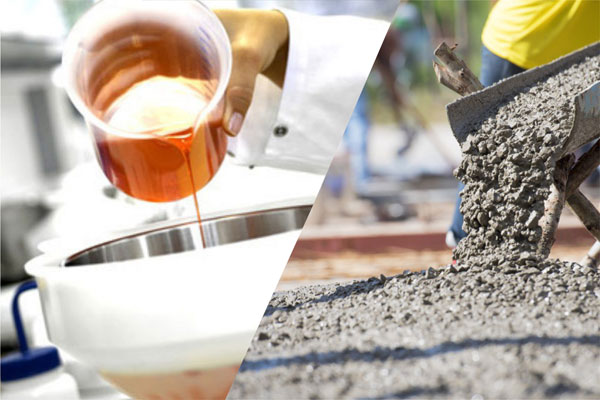Concrete curing compound consists essentially of waxes, natural and synthetic resins, and solvents of high volatility at atmospheric temperatures. The compound forms a moisture retentive film shortly after being applied on a fresh concrete surface. White or gray pigments are often incorporated to provide heat reflectance, and to make the compound visible on the structure for inspection purposes. Curing compound should not be used on surfaces that are to receive additional concrete, paint, or tile which require a positive bond, unless it has been demonstrated that the membrane can be satisfactorily removed before the subsequent application is made, or that the membrane can serve satisfactorily as a base for the later application.
Epoxy Coating
These can come as water or oil based solutions or as solvent-free. They can be single or two-component. Single-component epoxy paints are usually oil based. Two-component epoxy coatings are mixed in situ in proportions as prescribed by their manufacturers and they are quite suitable for factory, industrial or commercial building applications by dint of their excellent chemical & thermal resistant characteristics, hardness, durability, waterproofing characteristics etc. They are solvent-free. Epoxy coatings are also used in flooring for decorative purposes.

Ready mix plaster is a factory mixed/premixed sand-cement based plaster. All the activities that are generally undertaken on-site are performed in a quality-controlled environment at the plant to ensure no-batch variation and optimum sand gradation, which is of utmost importance for any plaster. Other additives such as fly ash and polymers are also added to it, to improve its performance and various other properties. These are generally used for building houses or making solid structures of any sort. Apart from these, they can also be used for various other purposes that require you to put two or more things together that will hold strong for long. You can also use ready mix plaster to make models.
Polymer Modified Mortar
Polymer-modified mortar is made by replacing a portion of the traditional binders with polymers. Polymers are added to mortar to increase characteristics that may include adhesion, toughness, flexural or tensile strength, and resistance to chemicals. Polymers act to improve the workability and adhesion of non-hardened mortar and often require less added water than does traditional mortar, which results in fewer pores and stronger cements, subsequently reducing water ingress and permeability to salts. Polymer-modified mortar is often commercially available with all ingredients already included in the mixture.
Construction chemicals have always been playing important roles in virtually all sorts of construction projects, be it industrial projects, residential building projects, commercial building projects and so on. These chemicals are often used in various elements of projects in order to achieve various important qualities such as workability, durability etc. Construction chemicals exist in many varieties from a large number of manufacturers worldwide.
Increasing demand for public, commercial and residential buildings combined with an increasingly urban population is driving the global construction chemical market. Demand for buildings, roads, bridges, tunnels and dams is further driving the market.
Discussed below are different types of construction chemicals used on hardened concrete either as surface application, coating or as repair materials.Concrete curing compound consists essentially of waxes, natural and synthetic resins, and solvents of high volatility at atmospheric temperatures. The compound forms a moisture retentive film shortly after being applied on a fresh concrete surface.
White or gray pigments are often incorporated to provide heat reflectance, and to make the compound visible on the structure for inspection purposes. Curing compound should not be used on surfaces that are to receive additional concrete, paint, or tile which require a positive bond, unless it has been demonstrated that the membrane can be satisfactorily removed before the subsequent application is made, or that the membrane can serve satisfactorily as a base for the later application.
Polymer bonding agents
Polymer Bonding Agent is an aqueous emulsion of a polymer and chemical admixtures. It is designed for use as a bonding agent with concrete and cement-based products in interior or exterior applications. Polymer Bonding Agent is also designed for use as a polymer modifier in mortars and concretes to develop increased tensile, flexural and bond strengths. The use of Polymer Bonding Agent in concrete and shotcrete also gives significant improvements in resistance to penetration by chlorides and de-icing salts.Mould release agents come in handy when you have materials that are shaped and constructed in moulds. Without the releasing agent
